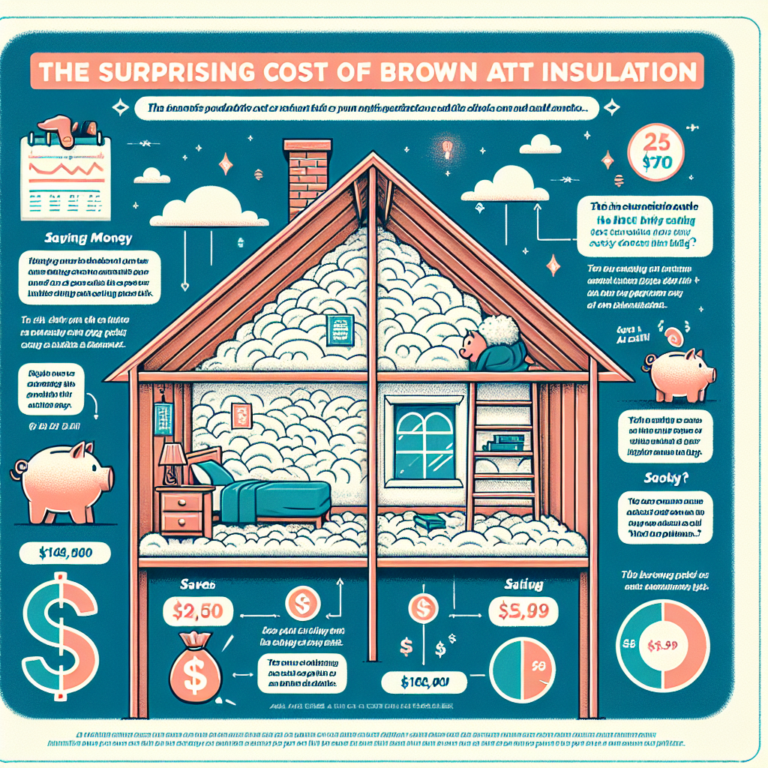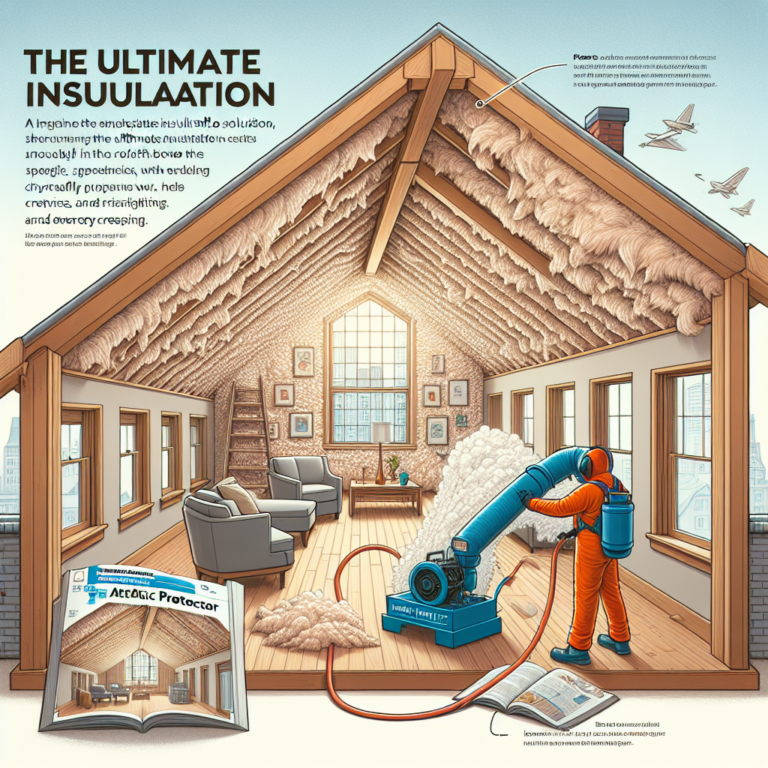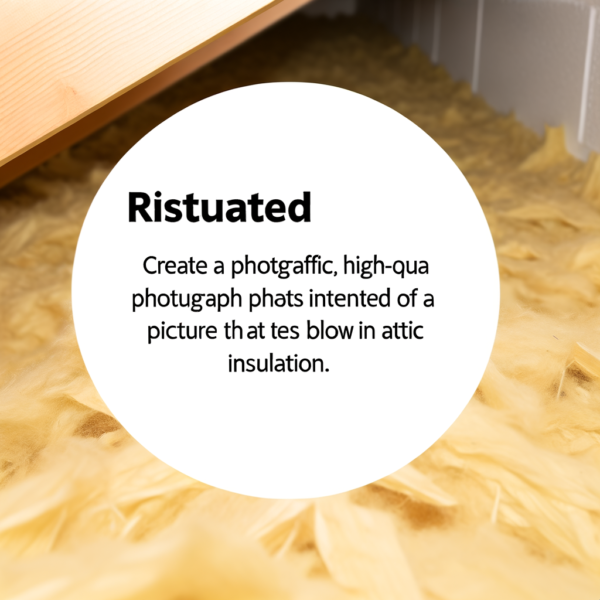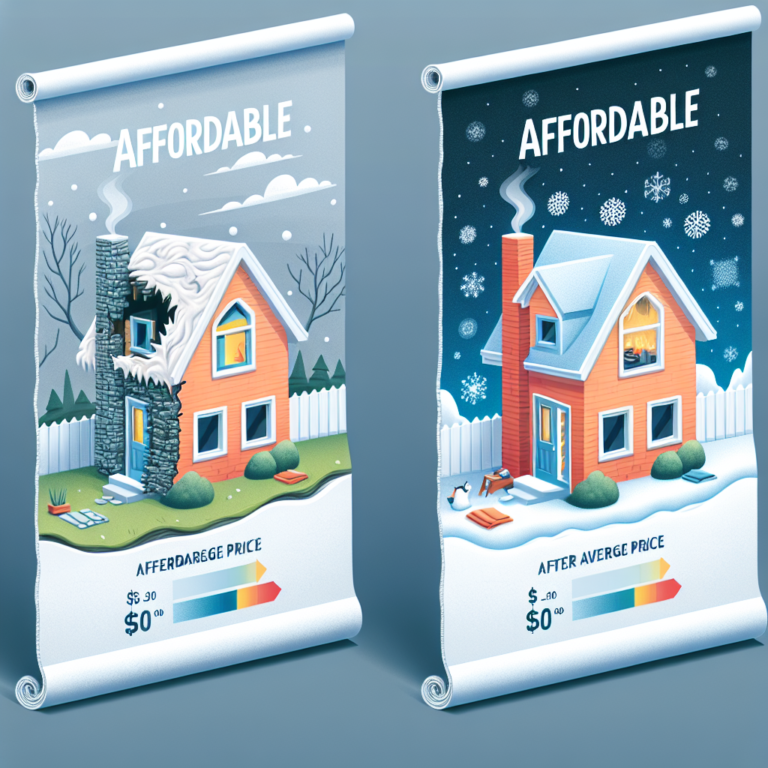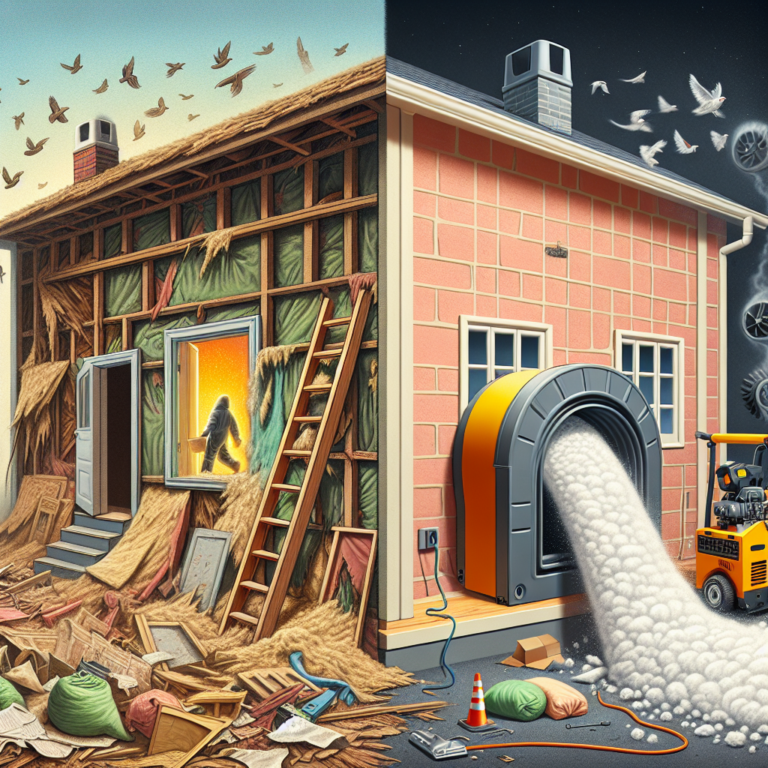Maximizing Efficiency: The Cost of Blown-In Insulation
Introduction
Upgrading your attic’s thermal barrier with blown-in insulation is one of the smartest investments you can make. Not only can it shrink your energy bills by up to 30%, but it also enhances year-round comfort, prevents moisture issues, and adds value to your home. Yet, the cost of blown-in insulation varies widely based on material choice, attic size, accessibility, and regional labor rates. In this guide, we’ll break down average costs, compare top materials, explore key cost drivers, and share money-saving tips—so you can make a well-informed decision on insulating your attic.
H2: Top 3 Types of Blown-In Insulation for Attics: A Cost Comparison
When shopping for blown-in insulation, you’ll encounter three leading options—fiberglass, cellulose, and mineral wool. Here’s how they stack up by performance and price.
H3: 1. Fiberglass Blown-In Insulation
• Composition: Tiny glass fibers blown into the attic cavity.
• R-Value: R-2.2 to R-2.7 per inch.
• Pros: Inexpensive, non-combustible, moisture-resistant, quick installation.
• Cons: Prone to settling over time, lower R-value than alternatives.
• Cost: $1.50–$3.00 per sq. ft. (installed).
H3: 2. Cellulose Blown-In Insulation
• Composition: Recycled paper treated with fire-retardants.
• R-Value: R-3.2 to R-3.8 per inch.
• Pros: Eco-friendly, higher R-value vs. fiberglass, excellent gap coverage.
• Cons: Can settle up to 20% over time, may require a moisture barrier in damp climates.
• Cost: $2.00–$4.00 per sq. ft. (installed).
H3: 3. Mineral Wool Blown-In Insulation
• Composition: Rock or slag fibers spun into wool-like chunks.
• R-Value: R-3.0 to R-3.3 per inch.
• Pros: Fire-resistant, sound-dampening, mold and mildew resistant, stable over time.
• Cons: Highest upfront cost, heavier weight may stress rafters if over-installed.
• Cost: $3.00–$6.00 per sq. ft. (installed).
H2: Factors Affecting the Cost of Blown-In Insulation for Attics
Several variables influence your final investment:
• Attic Size and Desired Depth: A standard 1,000 sq. ft. attic with 16–20 inches of insulation will run $1,500–$2,500. Larger or deeper applications naturally cost more.
• Existing Insulation Removal: Removing old or mold-damaged insulation can add $0.50–$1.00 per sq. ft. in labor and disposal fees.
• Accessibility and Layout: Tight hatches, low headroom, or obstructed joist bays require extra time and equipment, boosting labor costs by 10–20%.
• Material Choice: Higher-performance materials like mineral wool command premium prices, while basic fiberglass is the most budget-friendly.
• Local Labor Rates and Season: Insulation contractors are busiest—and often more expensive—during spring and fall. Off-season bookings can yield discounts.
• Regional Climate Incentives: Federal tax credits (up to 10% of material costs) and local utility rebates can offset 10–30% of your total expense.
H2: Maximizing Savings: Tips for Choosing the Best Blown-In Insulation for Your Attic
1. Evaluate Your Climate Zone
In cold climates, prioritize materials with high R-values per inch (cellulose or premium fiberglass). In humid areas, mineral wool’s moisture resistance pays off.
2. Target Critical Air Leak Areas First
Seal attic hatches, recessed lights, and plumbing chases before adding blown-in insulation to get the most energy savings for your dollar.
3. Opt for the Right Depth
Check DOE recommendations: at least R-49 (16–18 inches) in moderate climates; R-60+ (20–22 inches) in colder zones. Over-insulating beyond local code rarely adds extra savings.
4. Bundle Upgrades
Combine insulation with attic ventilation repairs, duct sealing, or thermostat upgrades. Many contractors offer package discounts.
5. Shop Rebates and Tax Credits
Visit the Database of State Incentives for Renewables & Efficiency (DSIRE) to find regional incentives. Federal IRS Form 5695 covers up to 10% of insulation material costs.
6. Request Multiple Quotes
Compare at least three licensed contractors, verify references, and look for workmanship warranties. Small price differences can add up on large projects.
H2: Q&A
Q1: How do I know if I need more blown-in insulation?
A1: If your attic insulation is below 10 inches or you feel drafts, notice uneven temperatures, or see daylight through roof boards, you likely need an upgrade.
Q2: Can I do blown-in insulation myself?
A2: DIY kits exist, but pros have commercial-grade blowers, safety gear, and training to ensure even coverage and proper R-value—making professional installation the smarter choice for long-term performance.
Q3: How long does blown-in insulation last?
A3: Fiberglass and cellulose typically last 20–30 years before settling reduces effectiveness. Mineral wool can maintain performance for 40+ years without significant compression.
Conclusion
Investing in blown-in insulation for your attic delivers immediate comfort gains and long-term energy savings—often recouping your initial cost within 2–5 years. By understanding the cost drivers, comparing materials, and leveraging seasonal rebates, you can maximize efficiency and ensure your home stays cozy and eco-friendly for decades.



